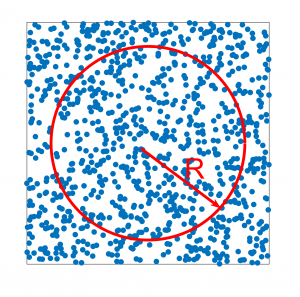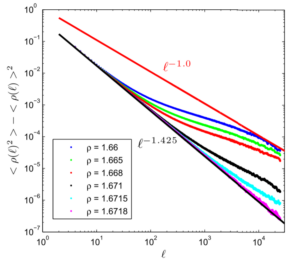Trainable materials
Controlling material properties usually requires some form of computer aided design, which is then followed by its careful fabrication. We, on the other hand, aim at training a generic disordered material. By forcing the system in various ways, we induce plastic deformations that alter material properties. A material “learns” a new function from the imposed stresses or strains.
As an example consider a material that undergoes creep, that is, it slowly flows in response to stress. In the video below, we train a response that is inspired by allostery in proteins: an elastic signal is transmitted from an input site to a far away output site. By periodically straining the input an output sites the entire structure evolves to allow this response.
We strive at understanding how different types of materials can be trained, the complexity of the elastic responses that can be obtained, and training strategies that are realizable in experiment. We are motivated by biology in studying in our systems concepts of learning, adaptability and memories.
Memories in aging solids
Disordered solids are often out of equilibrium, slowly evolving as they seek a lower free energy state. We considered how the deformation imposed on a material as it ages affects its elastic properties. We have found that the elastic response (e.g., Poisson’s ratio) reflects, not only, the current conditions it experiences, but its preparation history. The solids remember the imposed strain under which it was prepared, which can be read out by measuring its elastic response.
Recent work has shown that memories are very common in disordered systems that are out of equilibrium. Yet, understanding the very simple question of how a solid remembers is highly non-trivial.
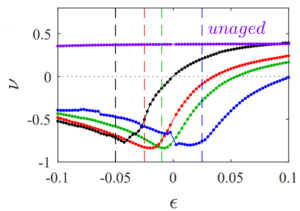
Force transmission & Tuning by pruning
Manipulating the microstructure enables the control of material properties. By removing even a small number of bonds from an elastic network, its moduli, for example, can be varied by many orders of magnitude. The basis for these manipulations, is understanding the governing rules by which forces are transmitted in disordered systems, and how they evolves upon microscopic alterations.
This line of research aims at understanding the fundamental question of how the microscopic structure of a material is related to its elastic properties.
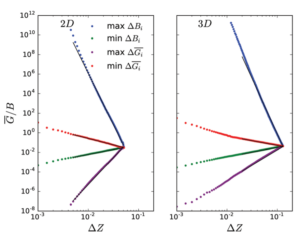
Hidden order in amorphous sphere packings
Materials are often classified by whether they are ordered or disordered. An ideal crystal has a repeating unit cell that encompasses the entire system, while a liquid, for example, lacks any long range correlations. It has long been suspected that disordered system may posses a hidden structural ordering. We have shown that amorphous packings posses such a hidden correlations under certain conditions. This order is not visible to the naked eye, nor to scattering, which is a common experimental technique. The exotic ordering in packings are associated with highly suppressed contact-fluctuations on large length scales (hyperuniformity).
Our research aims at understanding how these correlations form, the generality of this form of ordering in disordered materials, and the implications of these correlations on material properties.
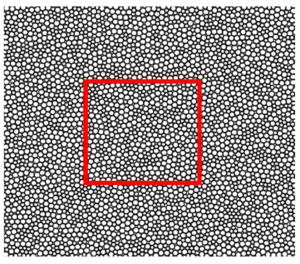

Hyperuniformity in non-equilibrium systems
Hyperuniformity is the phenomenon where the fluctuations of the density are highly suppressed in comparison to that of randomly placed particles with no positional correlations. It is characterized by measuring the variance of the particle number in a given volume. While in disordered systems the variance usually scales as the volume, in a hyperuniform system it grows more slowly than the volume (a smaller exponent). A system that is disordered on short scales, may posses large scale fluctuations similar to that of a perfect crystal.
In systems that are in thermal equilibrium hyperuniformity occurs only with long range interactions. Nonetheless, we have shown that this exotic ordering may occur in certain non-equilibrium systems. In particular, we have predicted this to occur in an experimentally realizable system: suspensions of non-Brownian particles that are sheared periodically. It is an open question how the microscopic dynamics give rise to these large scale correlations.
